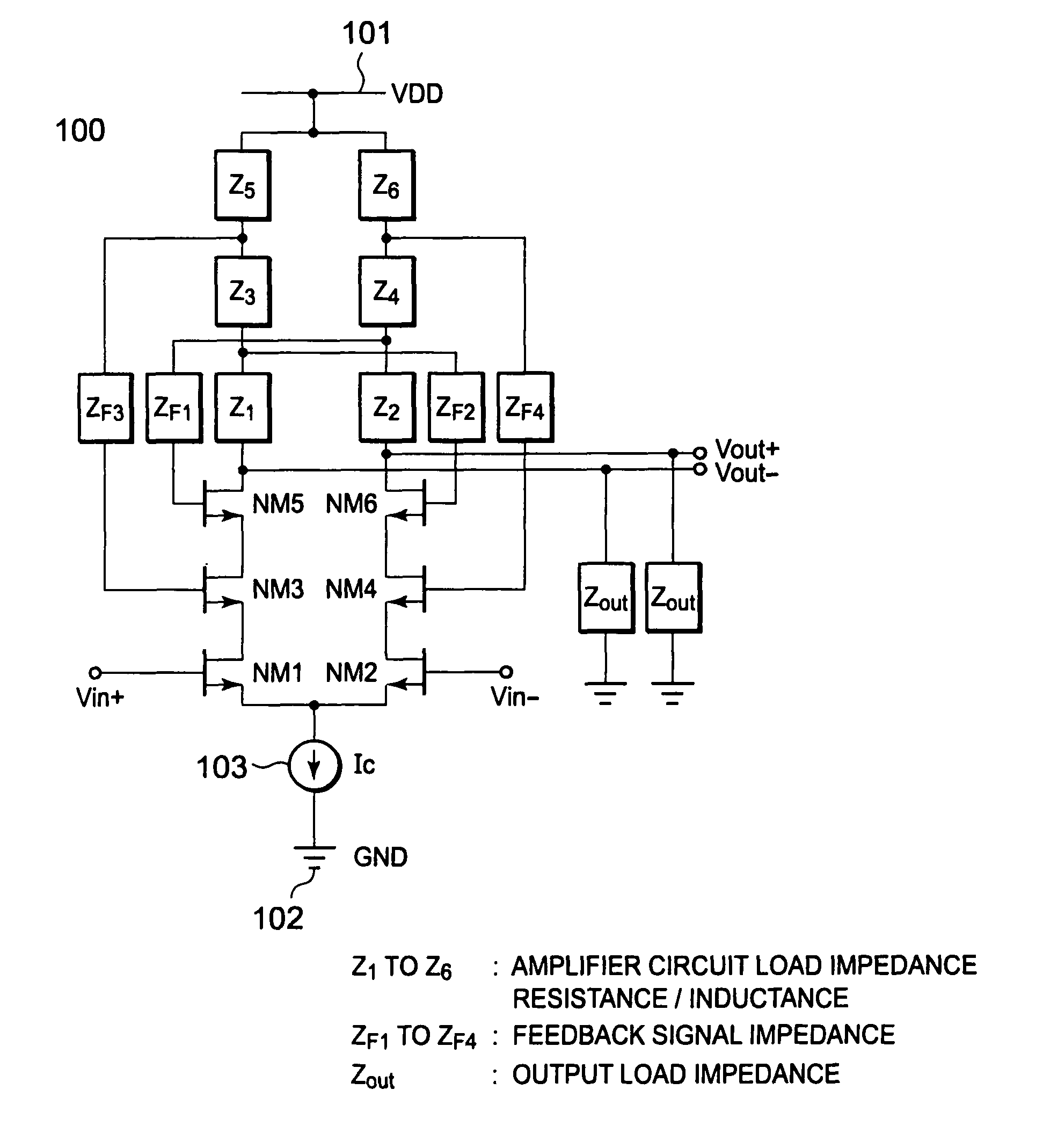Differential amplifier
a technology of amplifiers and amplifiers, applied in the field ofdifferential amplifiers, can solve the problems of deteriorating system characteristics, inability to obtain desired characteristics, and inability to successfully process input signals, etc., to achieve the effect of increasing the signal amount, reducing the amount of signals, and increasing the minimum value of signals outpu
- Summary
- Abstract
- Description
- Claims
- Application Information
AI Technical Summary
Benefits of technology
Problems solved by technology
Method used
Image
Examples
first embodiment
[0040]FIG. 1 illustrates a differential amplifier 100 according to a first embodiment of the present invention. First, a configuration of the differential amplifier 100 is described. Circuit elements constituting the differential amplifier 100 are provided between a power supply line 101, which supplies a power supply voltage VDD, and a ground line 102, which defines a reference potential. A constant current source 103 is a current source that supplies a current of a constant current value Ic. Transistors NM1, NM2, NM3, NM4, NM5, and NM6 are n-type MOS transistors, and each has a gate for controlling a channel formed between a source and a drain to be ON and OFF. The source of the MOS transistor NM1 and the source of the MOS transistor NM2 are connected to the constant current source 103. The gate of the MOS transistor NM1 is connected to an input terminal Vin+. A first input signal to be amplified is input to the input terminal Vin+. On the other hand, the gate of the MOS transisto...
second embodiment
[0062]FIG. 5 illustrates a differential amplifier 500 according to a second embodiment of the present invention. The differential amplifier 500 according to the second embodiment is different from the differential amplifier 200 according to the first embodiment in that each of the first load circuit and the second load circuit includes inductors as well as a resistor. Specifically, the loads Z1 and Z3 in the first load circuit are the inductors, and the loads Z2 and Z4 in the second load circuit are the inductors.
[0063]By using the inductors in the first load circuit and the second load circuit, the differential amplifier 500 may achieve a high gain in a higher frequency region than the differential amplifier 200 according to the first embodiment. NMOS transistors NM23 and NM24 operate in a linear region as in the first embodiment, and have a function of suppressing a current caused to flow by NMOS transistors NM21 and NM22 and hence increasing a lower limit of a limiter operation d...
third embodiment
[0066]FIG. 8 illustrates a differential amplifier 800 according to a third embodiment of the present invention. The differential amplifier 800 according to the third embodiment is different from each of the differential amplifiers according to the first and second embodiments in that inductors and p-type MOS transistors are used in combination as the loads, and a wide frequency band may be covered by switching a load inductance used in an operation of the differential amplifier. In this case, a combination of a PMOS transistor PM37 and an inductor L31 or a combination of an inductor L33 and a PMOS transistor PM39 is the first load circuit. Similarly, a combination of an inductor L32 and a PMOS transistor PM38 or a combination of an inductor L34 and a PMOS transistor PM40 may be the second load circuit. Each of the inductors L31 and L32 is the load inductance to support a high frequency band. On the other hand, each of the inductors L33 and L34 is the load inductance to support a low...
PUM
 Login to View More
Login to View More Abstract
Description
Claims
Application Information
 Login to View More
Login to View More - R&D
- Intellectual Property
- Life Sciences
- Materials
- Tech Scout
- Unparalleled Data Quality
- Higher Quality Content
- 60% Fewer Hallucinations
Browse by: Latest US Patents, China's latest patents, Technical Efficacy Thesaurus, Application Domain, Technology Topic, Popular Technical Reports.
© 2025 PatSnap. All rights reserved.Legal|Privacy policy|Modern Slavery Act Transparency Statement|Sitemap|About US| Contact US: help@patsnap.com



